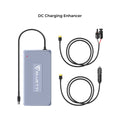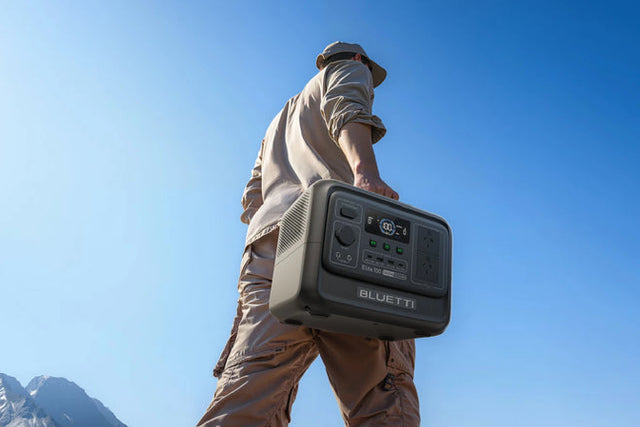Solar energy has become an increasingly popular option for powering homes, with its renewable and environmentally friendly nature. However, many people are still unsure about the specifics of using solar energy for their homes, such as how many solar batteries are needed to efficiently power their household. This article aims to provide an insightful and informative guide on the number of solar batteries necessary to power a house, the factors to consider when determining this number, and why understanding this is crucial for homeowners considering switching to solar energy. So, if you're curious about the amount of solar batteries required to power your home, read on to find out more.

What is a solar battery and how does it work?
A solar battery, also known as a solar panel battery or solar energy storage system, is a device that stores energy generated by solar panels.
This stored energy can then be used to power a house, reducing dependence on the traditional power grid. Solar batteries work by converting sunlight into electricity through the use of photovoltaic cells.
These cells absorb sunlight and convert it into direct current (DC) electricity. The DC electricity is then sent to an inverter, which converts it into alternating current (AC) electricity that can be used to power household appliances and electronics.
Any excess energy generated by the solar panels is stored in the battery for later use. This allows for a continuous supply of clean and renewable energy even when the sun is not shining.
Why use a solar panel battery in the Australia?
Solar energy has become an increasingly popular option for powering homes in Australia. With rising electricity costs and growing concerns about environmental impact, more and more people are turning to solar panels as an alternative energy source. However, simply installing solar panels is not enough to meet the energy needs of a household. This is where solar batteries come into play. These batteries store excess energy generated by the solar panels during the day, allowing homeowners to use it during peak energy usage times or when there is no sunlight. But how many solar batteries are actually needed to power a house? Let's explore this question and understand the importance of solar batteries in the use of solar energy in Australia.
What are the pros and cons of solar batteries?
Solar batteries have become a popular option for powering homes due to their environmental benefits and potential cost savings. One of the main advantages of solar batteries is that they allow households to store excess energy produced by their solar panels, making it possible to use this energy during times when the sun is not shining. This can help reduce or even eliminate the need to rely on the electric grid, saving homeowners money on their monthly electricity bills. Additionally, solar batteries are a renewable energy source, meaning that they do not emit harmful greenhouse gasses. However, there are some drawbacks to consider. Solar batteries can be expensive to install and typically have a limited lifespan, requiring replacement after a certain number of years. Additionally, they may not be able to store enough energy to power a household during periods of prolonged cloudy weather.

Solar panel battery storage: What should you consider?
1.The first factor that should be considered is the battery size. The size of the battery will determine how much energy it can store and, ultimately, how much it can power a house. The size of a solar battery is measured in kilowatt-hours (kWh), and it can range from as low as 2 kWh to as high as 20 kWh. The choice of battery size will depend on the energy needs of the household. A larger battery size will be able to store more energy and will be suitable for households with higher energy consumption.
2.Another important aspect to consider is the power rating of the battery. The power rating is the maximum amount of energy that a battery can deliver at one time. It is measured in kilowatts (kW) and can range from 1 kW to 10 kW. The power rating determines how much energy a battery can supply to power the house at a given moment. A higher power rating means the battery can supply more energy, making it suitable for households with higher energy demands.
3.Round-trip efficiency is another crucial factor to consider when choosing a solar panel battery storage system. It refers to the amount of energy that can be stored in the battery compared to the amount of energy that can be retrieved from it. The round-trip efficiency is expressed as a percentage, and it usually ranges from 70% to 90%. A higher round-trip efficiency means that the battery is more efficient in storing and releasing energy, making it a better option for powering a house.
4.Depth of discharge is also an essential aspect to consider when choosing a solar battery. It refers to the percentage of the battery's capacity that can be used before it needs to be recharged. Most batteries have a depth of discharge of between 50% to 90%. A higher depth of discharge means the battery can supply more energy before needing to be recharged. However, depleting the battery's capacity too often can reduce its lifespan. Therefore, it is important to strike a balance between the depth of discharge and the battery's lifespan.
5.It is also crucial to consider the battery's life-cycle and warranty. The life-cycle refers to the number of charge and discharge cycles a battery can undergo before its performance starts to diminish. Most solar batteries have a lifespan of 5 to 15 years, depending on the quality and usage. Similarly, the warranty period varies from 5 to 15 years, with some manufacturers offering up to 25 years of warranty. It is important to choose a battery with a longer life-cycle and warranty period to ensure its longevity and reliability.
There are several factors that one should consider when choosing a solar panel battery storage system to power a house. These factors include battery size, power rating, round-trip efficiency, depth of discharge, and battery life-cycle and warranty. It is essential to carefully assess these factors and determine the household's energy needs before making a decision. By considering these factors, one can choose the most suitable solar battery for their house and make the most out of their solar energy system.
What size solar battery do I need in Australia?
|
Solar battery sizes |
|
|
Solar panel system |
Required solar battery size |
|
3kW |
6 – 7kWh |
|
4kW |
9 – 10kWh |
|
5kW |
11 – 12kWh |
|
6kW |
13 – 14kWh |
|
12kW |
27 – 28kWh |
The size and number of solar batteries needed to power a house in Australia can vary depending on several factors. The first factor is the energy consumption of the household, which can be determined by analyzing the electricity bills. The amount of sunlight the house receives is another crucial factor as it directly affects the amount of energy that can be generated by the solar panels. The size and efficiency of the solar panels are also important factors to consider.
In general, a typical Australian household will need around three to four solar batteries to power their home. This number may vary depending on the factors mentioned above, as well as the type of battery used. For example, lithium-ion batteries are more efficient and can store more energy compared to traditional lead-acid batteries. Additionally, the more energy-efficient a household is, the fewer batteries they will need.
It is important to note that the goal of installing solar batteries is to have enough energy stored to power the house during the night or on cloudy days when the solar panels are not generating as much energy. Therefore, it is crucial to determine the correct size and number of batteries to ensure reliable and uninterrupted power supply. It is always recommended to consult with a professional solar panel installer to accurately determine the number of batteries needed for a specific household.
How many batteries do i need for a 10kw solar system
To power a house using solar energy in Australia, the number of batteries needed will depend on various factors such as the size of the house, the energy consumption habits of the household, and the location within the country. Let's take a look at the situation in different states of Australia to get a better understanding.
In New South Wales, the average energy consumption for a household is estimated to be around 20kWh per day. For a 10kW solar system, it is recommended to have at least one battery to store the excess energy generated during the day. In this case, a single battery with a capacity of 10kWh would suffice.

Moving on to Victoria, the energy consumption is slightly lower at an average of 17kWh per day for a household. In this state, it is recommended to have two batteries with a total capacity of 20kWh to ensure enough energy storage for the evening and cloudy days.
Queensland, on the other hand, has a higher average energy consumption of 22kWh per day for a household. For a 10kW solar system, it is recommended to have at least two batteries with a total capacity of 20kWh to cover the energy needs during peak hours.
Lastly, in Western Australia, the average energy consumption for a household is around 25kWh per day. Here, it is recommended to have three batteries with a total capacity of 30kWh to meet the energy demands throughout the day.
It is generally recommended to have at least one battery for every 10kW solar system for efficient energy storage and usage.
How to find a solar battery storage system right for my home?
Here are some points to keep in mind when determining how many solar batteries are needed to power a house in Australia:
- Calculate your energy needs: The first step in determining the number of solar batteries is to calculate the energy needs of your home. This can be done by reviewing your electricity bill and identifying your average daily energy usage.
- Consider your location: Australia has varying levels of sunlight throughout the year, depending on its location. If you live in a region that receives more sunlight, you may require fewer batteries compared to those who live in areas with less sunlight.
- Size of the battery: The size of the battery will also impact the number needed. Generally, a higher capacity battery will require fewer units compared to a smaller capacity battery.
- Type of battery: There are various types of solar batteries available in the market, such as lead-acid, lithium-ion, and saltwater batteries. Each type has different storage capacities, and the number needed will depend on the type you choose.
- Energy efficiency: Improving the energy efficiency of your home can also decrease the number of solar batteries needed. This can be achieved by investing in energy-saving appliances and implementing energy-efficient practices in the household.
By considering these points, you can determine the number of solar batteries needed to power your house in Australia, allowing you to make a well-informed decision when selecting a solar battery storage system for your home.
Bluetti AC500 + B300S
One of the latest advancements in the world of renewable energy is the solar battery storage system. This technology allows for the efficient storage of solar energy, providing a solution to the issue of energy intermittency. One notable product in this field is the BLUETTI AC500 + B300S, a modular part of the solar power system that consists of a 5,000W pure sine wave inverter and 6 B300S expansion battery packs. Here are some points to highlight the features of this system:
- Modular design: The AC500 + B300S allows for easy expansion, with the capability to connect up to 6 B300S battery packs, each with a capacity of 3,072Wh. This means that the system can be adapted to the specific energy needs of a household or business.
- High-quality inverter: The 5,000W pure sine wave inverter ensures a stable and reliable power output, with the ability to handle a surge of up to 10kW. This guarantees that all devices connected to the system will operate at their maximum capacity.
- Long-lasting battery: The B300S expansion battery pack is equipped with a LiFePO4 battery, which has a lifespan of over 3,500 cycles to 80% capacity. This translates to more than 10 years of use, making it a cost-effective investment.
- Smart control: The AC500 + B300S system can be controlled through a smartphone app, allowing for easy monitoring and management. The system also has WiFi and Bluetooth connectivity, making it convenient to operate.
- Multiple recharge options: This solar battery storage system offers 6 ways to recharge, including AC, solar, car, generator, lead-acid battery, and dual charging. This makes it suitable for a variety of situations and ensures that the system is always charged and ready to use.
- Versatile outlets: With 16 outlets, the AC500 + B300S system can power a wide range of devices, making it suitable for both residential and commercial use.
The BLUETTI AC500 + B300S is a reliable and efficient solar battery storage system that offers versatility, convenience, and cost-effectiveness. With its modular design, high-quality components, and advanced features, it is a valuable addition to the renewable energy market.












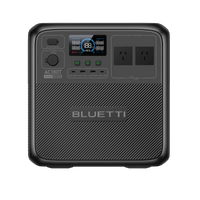












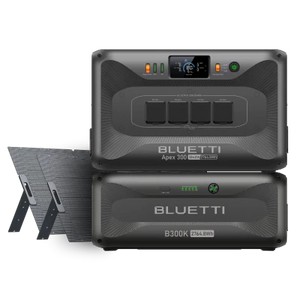





















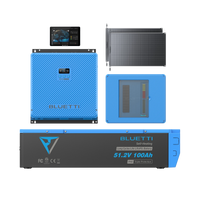





















![[Phased Out] BLUETTI B80P Expansion Battery | 806Wh](http://www.bluettipower.com.au/cdn/shop/files/202310025B80P_2000-2000px_4_4caa0c1c-4dab-4272-9e9b-2b7507e5bd81.jpg?v=1713777870&width=200)
![[Phased Out] BLUETTI B210P Expansion Battery | 2,150Wh](http://www.bluettipower.com.au/cdn/shop/files/2_08cf9ef3-03a4-4489-b641-d3edb8094896.webp?v=1716016566&width=200)
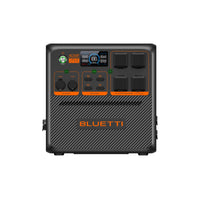


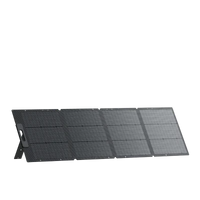


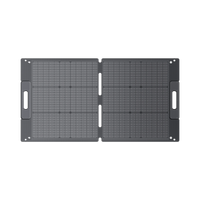





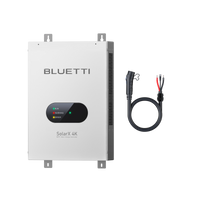






















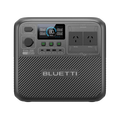

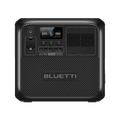






























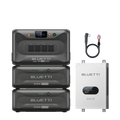



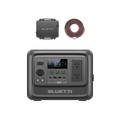





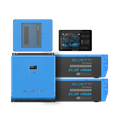



































![[Phased Out] BLUETTI B80P Expansion Battery | 806Wh](http://www.bluettipower.com.au/cdn/shop/files/202310025B80P_2000-2000px_4_4caa0c1c-4dab-4272-9e9b-2b7507e5bd81.jpg?v=1713777870&width=120)
![[Phased Out] BLUETTI B210P Expansion Battery | 2,150Wh](http://www.bluettipower.com.au/cdn/shop/files/2_08cf9ef3-03a4-4489-b641-d3edb8094896.webp?v=1716016566&width=120)


















